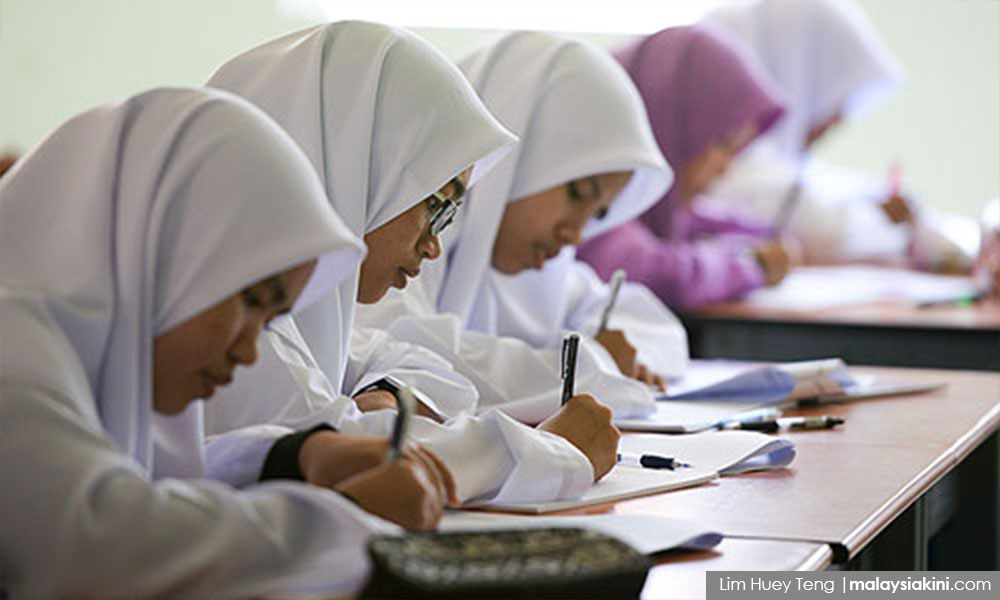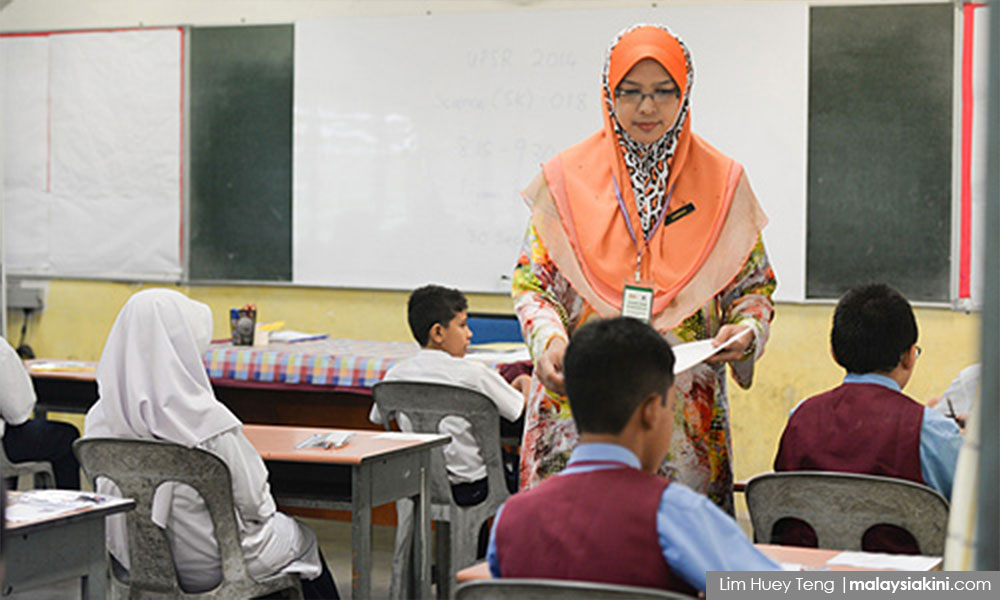COMMENT | Malaysians have cast off their fears and become agitators for change. We witnessed a groundswell of discontent in the polls, leading to the election of a new government. The comments that we see in the press and on social media since suggest that Malaysians who demanded change will now hold their new government accountable for delivering that change and creating a more united and dynamic nation. This is not a time for ‘business as usual’; it is a time for regeneration and re-imagining.
The most promising space to begin this work is within the context of our schools and education policy. Schools are foundational. They are safe and sacred spaces where our young acquire knowledge and learn how to think. They do this while developing their multiple social identities and exploring interesting and complex questions about race, language, religion, and nationhood.
However, this sacred space has become contested ground over the last 60 years. Along with many neighbourhoods, schools are amongst the most segregated places in our country. Chinese children have left Malay-medium government schools, preferring instead to be educated in Mandarin-medium schools. In rural areas, the same is true for Indian children who attend Tamil-medium schools, at least at the primary level.
Interestingly, in some urban areas, Chinese-medium primary schools are among the most racially-mixed; they are chosen by Malay, Indian and other Malaysian parents who desire a more rigorous education for their children. Data from a 2016 survey that I conducted with colleagues in Peninsular Malaysia showed that most Malaysians (in particular 62% of Malays, 48% of Indians but only 21% of Chinese) believed that vernacular schools should be shut down in an effort to increase integration.
However, problematising vernacular schools is too easy – it ignores the larger context within which these schools arose and the functions that they serve. Mandarin and Tamil schools ensure that Chinese and Indian children learn their own languages well (something not adequately offered in Malay-medium government schools), thereby allowing them full access to the richness of their cultures. Chinese, and to some extent Tamil, schools are also seen to offer a much higher educational standard than Malay-medium government schools. The fact is that many Malaysians (particularly non-Malays) believe in these schools and want them. Within a comprehensive national education policy, we need to take seriously their educational aspirations for their children.
Furthermore, problematising vernacular schools allows other divisive forces to go unnoticed - there has been a rise in government Islamic schools in recent years, where Muslim children learn exclusively with other Muslim children and without any contact with non-Muslim children. People who vociferously criticise vernacular schools often overlook the quiet rise of these mono-racial and mono-religious Islamic government schools and their implications for our multicultural society.
Thus, we are seeing a level of racial and religious segregation in schools that is unprecedented in our history. And the segregation does not stop there - a socio-economic form of educational segregation is also beginning to take root in Malaysia.
In the last decade, the BN government decided to allow Malaysian students to attend international schools in Malaysia. This triggered a rapid expansion of both international and private schools (which teach the Malaysian curriculum, but with better facilities and teachers) all over the country. These schools were set up to serve children whose parents were unhappy with the educational quality of government schools. Anecdotally, I have also heard that non-Muslim parents worried about the increasingly Islamic and mono-racial nature of government schools.

But the rise of these private and international schools has come at a cost to our nation. Parents with means, particularly in urban centres, sometimes choose these new schools over government schools, increasingly (but not exclusively) leaving in government schools the children of less well-off families. So, the gulf between the ‘haves’ and ‘have-nots’ grows further.
Moreover, private and international schools offer lower student-teacher ratios, higher technological engagement and other opportunities for a more rigorous, modern and rounded education, thereby further widening the gap between the ‘haves and ‘have-nots’. And finally, many international schools (which are often more expensive than private schools) teach the Malay language in a less than committed way, resulting in Malaysian children who finish their primary education barely able to hold a conversation in Malay.
At this point, the gulf between the ‘haves’ and ‘have-nots’ becomes virtually unbridgeable – if people cannot speak to one another, there is no hope for developing a common understanding and mutual empathy.
‘Choice’ in school education is very on-trend – we see it shaking the very roots of public education in the US as it has done for a long time in the UK. In Malaysia, the government has allowed so much choice in education to appease its vocal constituents, but with little regard for the implications that this choice-model will have on national development and integration. It has also ignored those without a voice - the families who are just getting by and who cannot imagine an education other than that offered in their local government schools.
Surely power should be used to uplift those who most need help and in the process to uplift and unite us all. Education is meant to be the great equaliser, and yet it has been used to entrench racial, religious and linguistic divisions and to widen inequality. The new government, and particularly the new education ministry, must do better.
There is now a great deal of research from around the world which shows that we do better when we are together. People who have more interactions with people from other ethnic groups have better attitudes towards the group as a whole, more empathy and more friendships. In a multicultural country that is becoming more diverse with increasing immigration, we need to grapple with our differences and a find a model of multiculturalism and multicultural education that really works.
‘Multicultural’ is sometimes understood to mean separate but equal and this often explicit – always tacit – segregation on the basis of race and religion was the model espoused by BN: “you can all have what you want as long as you all stay separate”; a striking and damning continuation by post-independence governments of our colonial legacy. The multiculturalism of this form fosters an insidious ‘us and them’ thinking, where mistrust and suspicion flourish, and hatred can easily take root.

The antidote is clear: if we do better together, then keep us together. When we are together in the classroom, in the canteen, and on the sports field, there is less opportunity for divisive ‘us-them’ thinking to take such stark shape. Create an education policy that transforms our government schools into places that parents from all racial and religious groups want to send their children. Malay language teaching should be preserved and English language teaching should be strengthened. In addition, children can and should learn Mandarin or Tamil or Arabic to a high level, within Malay-medium government schools.
Take seriously the fact that the non-Malays in this country care about their languages. Don’t treat these as Chinese and Indian problems to be solved within Chinese and Indian communities; these are the clearly expressed needs of our fellow Malaysians. A trilingual population would be an enormous asset for a country of our size; we would set ourselves apart as truly distinctive on the global stage. Trilingualism could be the jewel in our crown and a triumph of our multiculturalism. We need to stop seeing multiculturalism as a problem we have to manage, and instead, we should recognise the endless possibilities for cohesion, creativity and global success that it offers.
Similarly, we must find a better way of bringing basic religious education into schools. We need to do much better than ‘Agama’ classes for Muslim students and ‘Moral Education’ for everyone else. Our 2016 survey showed that Malaysians, especially Muslims and Hindus, were highly religious, but, on the whole, Malaysians had a poor understanding of religions other than their own. In a centuries-old multicultural setting, it seems severely lacking for Muslims to have a strong understanding of Islam but not of any other religion, and vice-versa.
Our research showed the Malaysians who were highly religious and who had a good understanding of other religions had much more positive attitudes towards people from other religious groups compared to those who were highly religious but lacked knowledge of other religions. Thus, multi-faith education should be rigorously and respectfully taught, and once again, could be a distinctive feature of our Malaysian schools. It is also worth considering that a child who has a good understanding of other religions and considers them in relation to their own faith, might turn out to be more consciously and deeply embedded within their own religious tradition.
The main obstacle to a world-class education system has been removed; the people have done their work on voting out a corrupt and colonially-minded regime and are eager for change. The new government has the enormous responsibility, but also the exciting task, of creating an educational model that embraces and emboldens our multiculturalism.
The new education minister is a promising choice because of his exposure and appreciation of the multiple cultures and religions in Malaysia, and his track record of working to enhance multi-faith understanding. The time is ripe for a reset and a re-imagining.
ANANTHI AL RAMIAH Is an independent scholar who has published widely for both academic and general audiences on questions of ethno-religious diversity and integration. She has a PhD in social psychology from Oxford.
The views expressed here are those of the author/contributor and do not necessarily represent the views of Malaysiakini.

